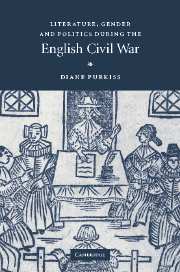Book contents
4 - Charles I
Published online by Cambridge University Press: 22 September 2009
Summary
In the past ten years, historians have paid a great deal of attention to the representational strategies adopted by a number of early modern monarchs, including Elizabeth I, James I and Charles I. It might be possible to pause in these ongoing projects in cultural history in order to note that one of the factors linking Elizabeth and James is a certain problematic of gender: bluntly, Elizabeth was a woman, and James homosexual. Yet it was the ostensibly less problematic Charles, certainly and even piously heterosexual after the death of Buckingham, who eventually found himself facing the axe. Does this suggest that representation is not the issue? It certainly suggests that symbols are not the sole factor in monarchic legitimation.
But if we pause to look more carefully at the figure of Charles himself, we may see that he was not as unproblematically male as he may seem at first glance. In fact, Charles's gender and even his sexuality were open to question precisely because his father's had been. This was literally true because of Charles's attachment to Buckingham. He began his reign in thrall to Buckingham, and a poet named Alexander Gill may have spoken for many when he wrote and asked
God to save
My sovreign from a Ganymede
Whose whorish breath hath power to lead
His Majesty which way it list:
O! let such lips be never kist.
The king ‘let me sway / His sceptre as I pleas'd’, said Buckingham in a dialogue.
- Type
- Chapter
- Information
- Literature, Gender and Politics During the English Civil War , pp. 98 - 130Publisher: Cambridge University PressPrint publication year: 2005



